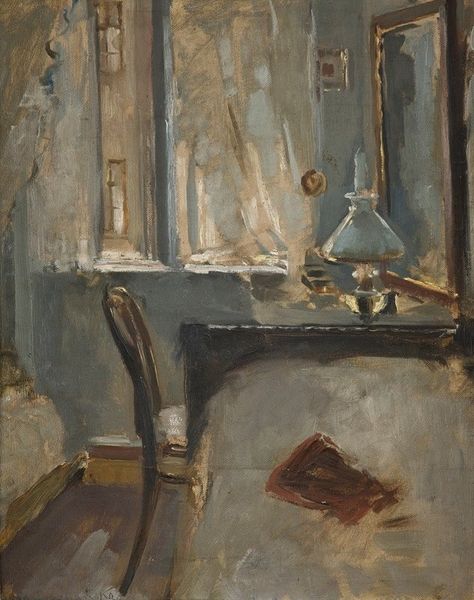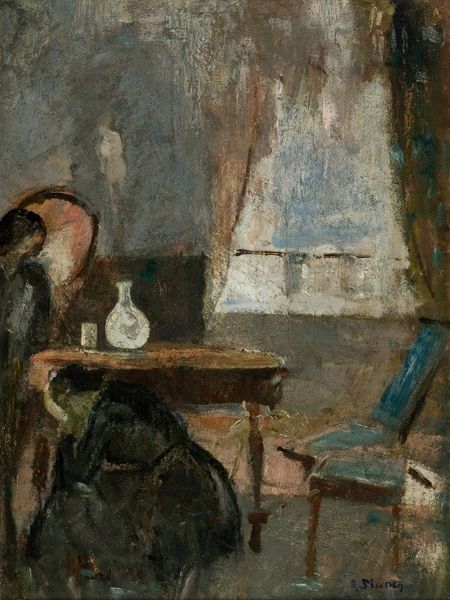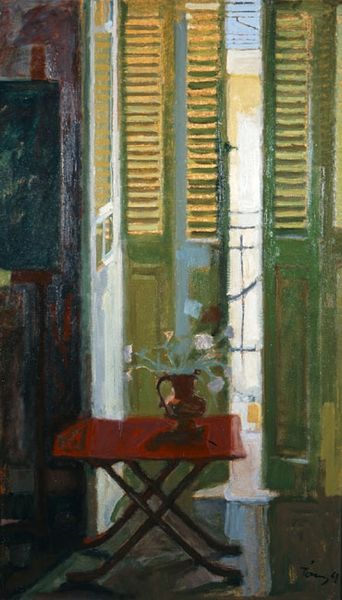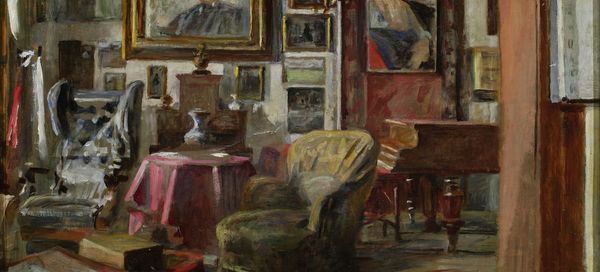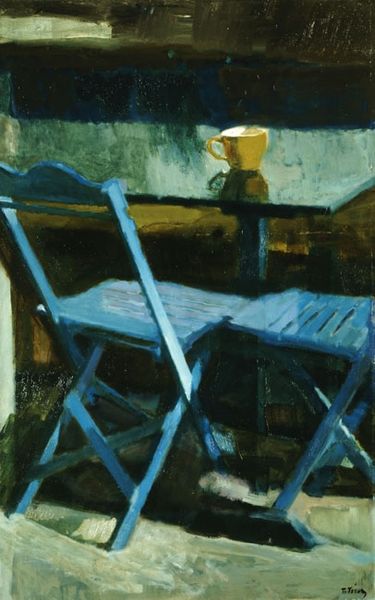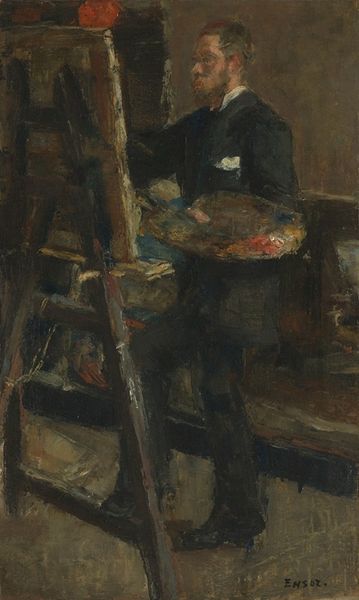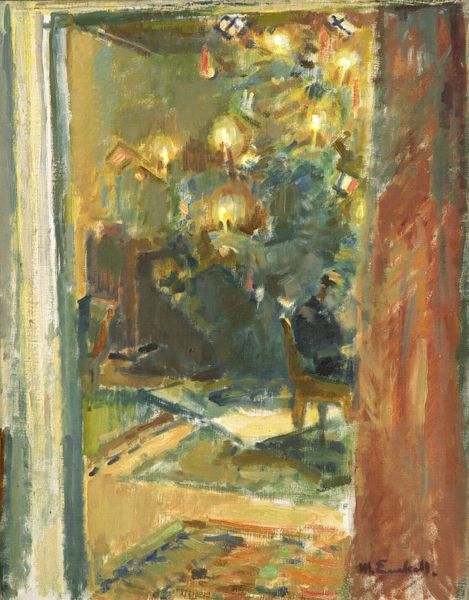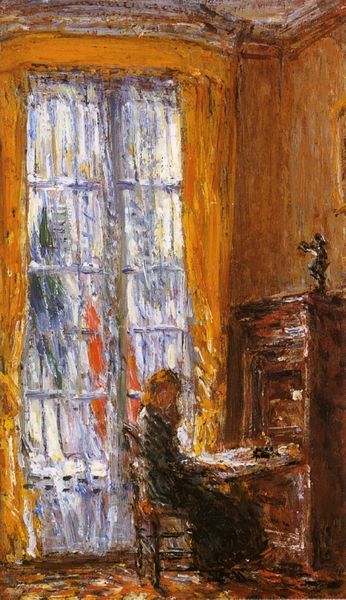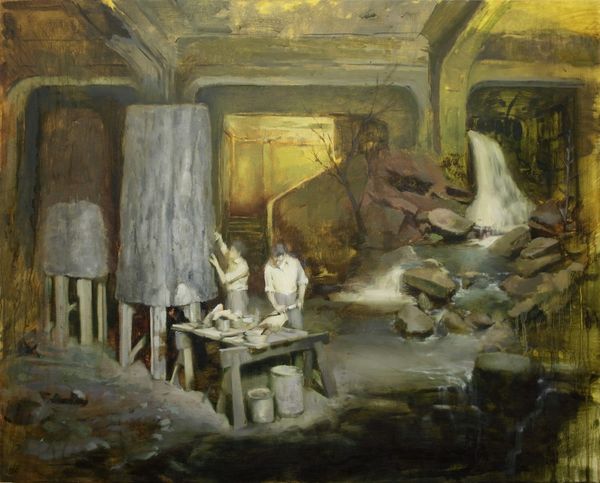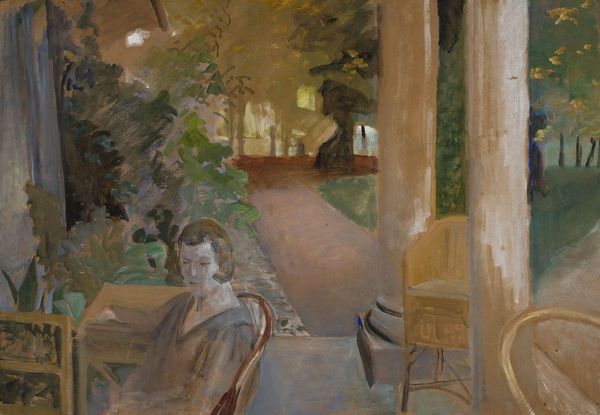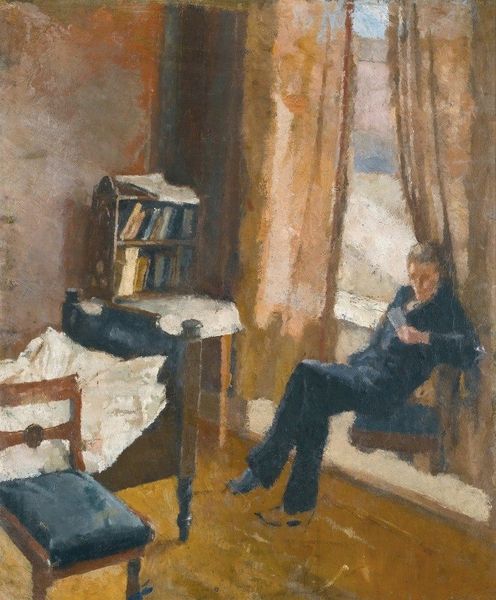
Copyright: Panayiotis Tetsis,Fair Use
Curator: Let’s turn our attention to "Interior II\u0399," created in 1976 by Panayiotis Tetsis. You're immediately confronted with a dance of light, wouldn't you say? Editor: Absolutely. The luminosity strikes me first. Those strong contrasts create such palpable shadows, hinting at something just out of view. Almost feels… nostalgic? Curator: Perhaps reflecting Tetsis's biography? His work often references his birthplace of Hydra and explores themes of memory and national identity within the context of post-war Greece. The interplay of interior and exterior space here could symbolize a longing or a reflection on belonging. Editor: Interesting. But beyond any potential symbolism, let's consider the materiality itself. Notice how thickly the oil paint is applied. The impasto is really crucial here, right? It transforms this domestic scene, raising a functional tableau of light, furniture, and domestic object into a heavily constructed artifact. Curator: Exactly, and in some interpretations, it transcends the typical still life by embodying an existential introspection. This "interior" becomes less a place and more a psychological state— a tangible meditation on his cultural and national place as Greece navigated complicated geo-political changes and new relationships with western economies. Editor: I can see that, given Tetsis' Greek background, the work embodies a hybrid identity that might seek international attention by deploying Western oil paint, a table and common domestic objects as medium and subjects. However, these common commodities or production components also appear specifically “Greek.” Curator: And considering the impressionistic style he adopts – so deliberately – might suggest his way of navigating dominant aesthetic paradigms of the time. A dialogue, or negotiation of positionality as well as visibility. The light then could itself be considered another component, revealing his social landscape. Editor: All well considered, and as a visual artifact in oil-paint form, the scene may offer a glimpse, if only a suggestion, to domestic commodity circulation among an interconnectedness of materials in the world, from pigments and processes, objects to light – all entangled as capitalistic, gendered, cultural forms of representation. Curator: Precisely. "Interior II\u0399," invites multiple narratives beyond just what is represented, but how that depiction actively situates its maker and subject within their historical landscape. Editor: Yes, after observing more carefully, it appears there's plenty here that material evidence exposes which then allows for a discussion of intersecting conditions of society and identity at large.
Comments
No comments
Be the first to comment and join the conversation on the ultimate creative platform.
